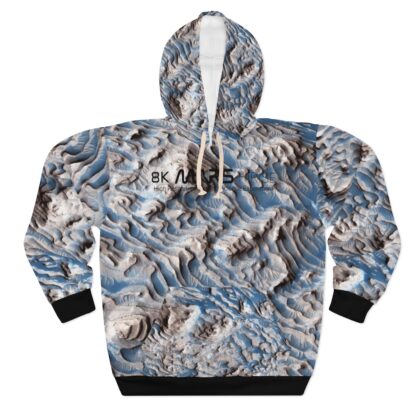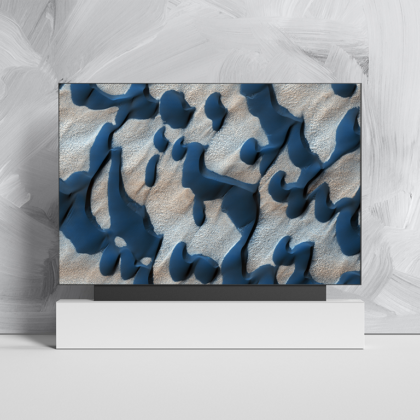8K image from HiRISE (High Resolution Imaging Science Experiment) onboard the Mars Reconnaissance Orbiter, NASA. HiRISE is the most powerful camera ever sent to another planet, letting us see the surface of Mars at 30 cm/pixel. That means we could probably see your shadow from over 200-300 km above. Original image resoultion: 7860 x 4320 (8K)
This classic unisex jersey short sleeve tee fits like a well-loved favorite. Soft cotton and quality print make users fall in love with it over and over again. These t-shirts have-ribbed knit collars to bolster shaping. The shoulders have taping for better fit over time. Dual side seams hold the garment’s shape for longer.
.: 100% Airlume combed and ringspun cotton (fiber content may vary for different colors)
.: Light fabric (4.2 oz/yd² (142 g/m²))
.: Retail fit
.: Tear away label
.: Runs true to size
This image of the Meridani Planum is an example of “Mass wasting and Slope Processes“, a broad science theme dealing with the downhill movement of rocks and debris. Many different types of mass movement fall into the general category of mass wasting, from large landslides and debris avalanches to rockfalls, debris flows and soil creep. On Mars, mass wasting landforms are seen at a range of scales, from giant rock avalanches to tiny slumps and single rockfalls. One of the most exciting discoveries of recent spacecraft exploration is the assortment of changes that we can see occurring on Martian slopes today. Dark flows termed “Recurring slope lineae” (or RSL) are seen slowly advancing down warm slopes in the summer. New mass movements are seen in Martian gully landforms, and generally occur in the late winter or spring, potentially triggered by the carbon dioxide frost that coats the surface in the winter. Avalanches are seen in action on steep slopes at the edge of the North Polar Layered Deposits when they are warming in Northern spring. Slope streaks are seen in dusty regions of Mars and are thought to be the result of dust avalanches, sometimes triggered by impact craters or rockfalls. Image acquired: November 2016, approximately 269 kilometers above the surface. Scene is 5 km across.
Image Credit: NASA/JPL-Caltech/MSSS
Design: © 2022 Martian Internet.








Reviews
There are no reviews yet.